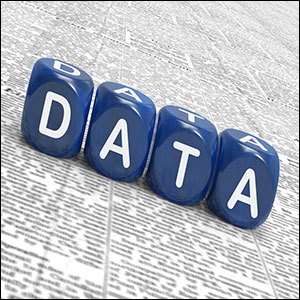
Data Governance is defined as the execution and enforcement of authority over the management of data and data-related assets.1 The terms “Data Mesh” and “Data Fabric” are the most recent examples of names being given to something that describes techniques to help organizations manage their data. This column explains the overlap and relationship between data governance, data fabric, and data mesh – and the role of data as the soul of business transformation. In this column, I will describe how data governance can and should be associated with data fabric and data mesh techniques. It’s all in the data.
The term “governance” focuses attention on people’s behavior. Governance is often connected with power and control. While data fabric is technology-centric and data mesh focuses on organizational change, it makes sense to address organization change first as mesh concentrates on getting people to alter their present behavior.
After describing the association between governance and mesh, we will be better prepared to address the association between governance and fabric. This order is consistent with how organizations should apply governance to these two distinct, but complimentary, techniques.
Data Governance and Data Mesh
Industry analysts and software vendors have often separated organizational data into two categories including operational data and analytical data. Data for reporting and analytical purposes has always been separated logically and physically from data used to support organizational operations. From the past days of the data warehouse to the present days of data science and analytical platforms, data used to make decisions has been architected differently than data designed to support business functions and processes.
Data mesh architecture originated on the concept of placing the responsibility for the data with the people in closest proximity to the data. The terms “decentralization” and “distribution of accountability” lie at the heart of mesh architecture. This premise is a direct connection to data stewardship which is a core tenet of data governance. Organizations that formalize accountability for data definition, production, and use as a driving factor in governing their data are ahead of organizations that shy away from stewardship as the basis for their data governance programs.
Organizations looking to improve overall efficiency and effectiveness often operate in a decentralized fashion. By decomposing the business into business domains, organizations narrow the impact of continuous change. Domains of data are tactical considerations for data governance while stewarding those data domains as cross-organizational assets become the most difficult aspect of governing data. Ownership of data by a business function may improve effectiveness, but can lead to silos of data that cannot be used to view the organization as a whole.
That is where data governance must be applied to data mesh. Effective governance requires that the activities of business domain data owners must be coordinated across the organization. This coordination does not happen naturally and requires a resolute and purposeful effort to drive cooperation. Formalized accountability for data (stewardship) within a business data domain and across business domains is required to achieve the level of data-related behavior (governance) necessary to implement a fully controlled data landscape.
Data Governance and Data Fabric
A data fabric is a set of services and architecture that deliver reliable capabilities across data environments. The architectural aspects of data fabric require standardization of data practices across data storage platforms and devices used to utilize that data. Standardization as a service requires the execution and enforcement of authority, in other words governance, over the data. Data fabric being technical by definition this does not eliminate the need for formalized accountability for the services and the architecture.
Data fabrics are deployed to optimize access to data distributed across platforms and logically deliver an orchestrated view of the data to enable self-service by stakeholders. Fabrics empower data scientists to access data with improved efficiency and effectiveness and eliminates many of the complexities that result from attempting to access data silos. Similar to data mesh, the implementation of these capabilities requires coordination and cooperation of formal data stewards and a governed data ecosystem.
Since the goal of data fabric architecture is to democratize and fully exploit and leverage the most important of data resources, the reduction of complexity requires consistency and standardization that can only be addressed through enforced authority and formalized accountability for data management practices. These practices result in improved data quality, understanding and insights, control and access, classification, protection, and security. The goals of implementing an effective data fabric mimic the goals of effective data governance.
Data fabric is a relatively new model that streamlines and incorporates next-gen enterprise data management (EDM) and the delivers data across an assembly of end points including both on-prem and cloud-based environments. Data fabric is an architecture and a set of services that relieves physical limitations and provides uniform access to data and enables the acceleration of digital transformation.2
The availability of people and other resources to focus on building out successful data mesh and data fabric, is a requirement to success. The guidance toward governed coordination and cooperation of these people is imperative to moving organization forward to leverage their data to its fullest extent.
Summary
Rather than implement a data fabric and/or data mesh independently of data governance, these complimentary disciplines are logical partners. Organizations that are looking to improve their data’s value must combine the technological and behavioral aspects of data management to guide their ability to become data-centric and data-driven.
Data governance, data mesh, and data fabric should always be spoken of together rather than independently as the means to achieve similar goals. It’s all in the data.
1 Seiner, Robert. Non-Invasive Data Governance: The Path of Least Resistance and Greatest Success (Technics Publications, 2014).
2 Paraphrased from the overview of E-Book, Tittel, Ed. Data Fabric for Dummies (Hitachi Vantara Special Edition).
